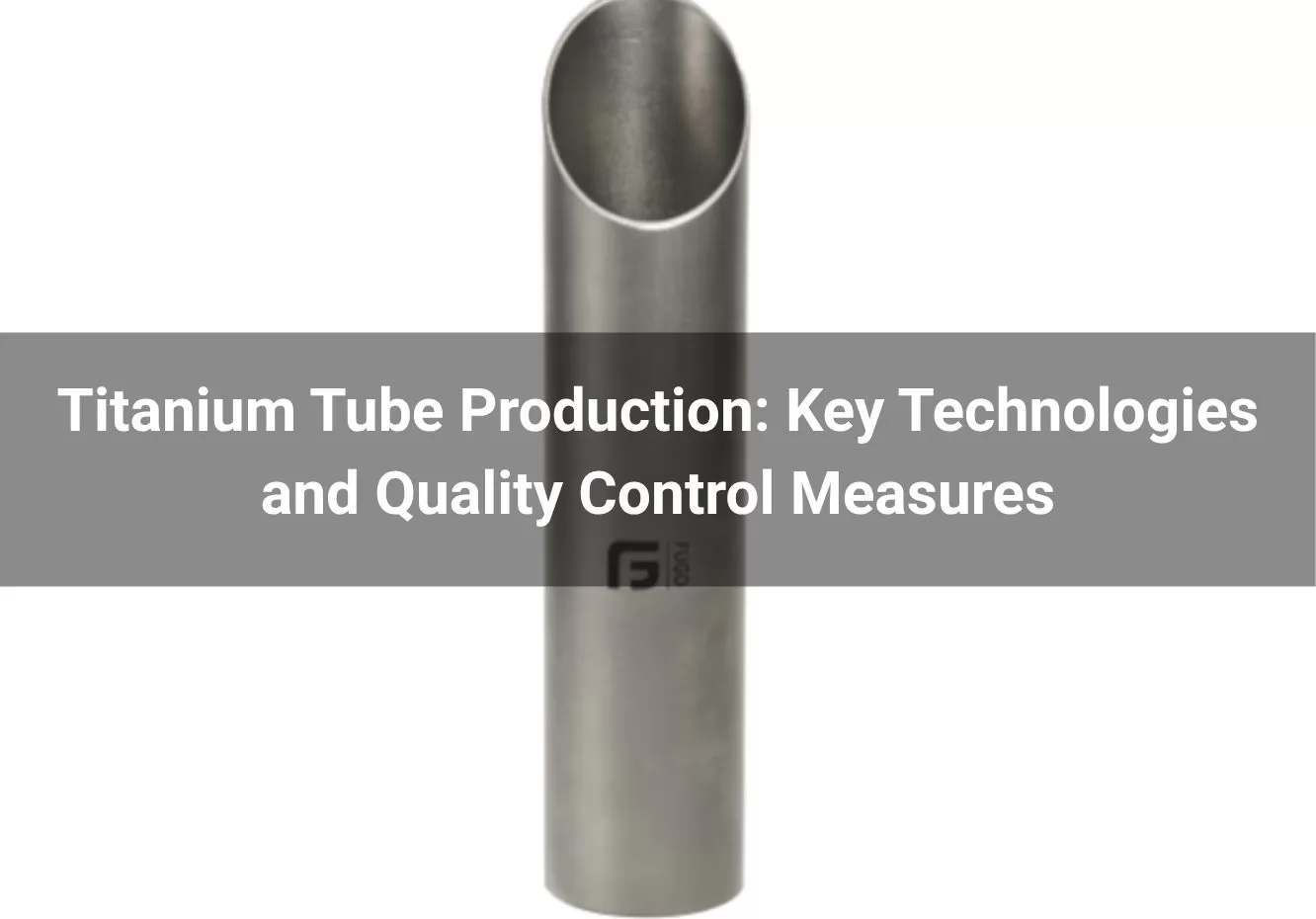


Titanium tubes are essential components in industries demanding high performance, such as aerospace, medical devices, chemical processing, and marine applications. Renowned for their exceptional strength-to-weight ratio, superior corrosion resistance, and biocompatibility, titanium tubes outperform many traditional materials like steel or aluminum in harsh environments. However, producing these tubes is a complex process due to titanium's reactivity with oxygen and nitrogen at elevated temperatures, its high melting point (around 1,668°C), and the need for precise control to maintain material integrity. This article explores the key technologies involved in titanium tube production and the rigorous quality control measures that ensure reliability and safety.
The manufacturing of titanium tubes begins with raw material extraction and evolves through advanced metallurgical and forming processes. Titanium is primarily derived from minerals like rutile and ilmenite, processed via the Kroll process to yield titanium sponge—a porous, impure form of the metal. This sponge is then purified, melted, and alloyed (e.g., with aluminum and vanadium for Ti-6Al-4V, or TC4, a common grade) in vacuum arc remelting (VAR) furnaces to produce ingots or billets. VAR, the primary method since the 1950s, ensures high-purity alloys by remelting the sponge under vacuum to eliminate inclusions and gases.
From these billets, tubes are formed using seamless or welded techniques. Seamless tubes, preferred for high-pressure applications, start with piercing the billet to create a hollow cylinder, followed by hot extrusion or rolling at temperatures above the beta transus (around 995°C for Ti-6Al-4V) to shape the tube. Hot extrusion forces the billet through a die under high pressure, achieving uniform wall thickness, while hot rolling further refines dimensions. For precision, cold drawing follows, where the tube is pulled through a die over a mandrel at room temperature, enhancing surface finish and dimensional accuracy—critical for aerospace components. Cold drawing can reduce wall thickness by up to 50% per pass, but requires intermediate annealing to relieve stresses and prevent cracking.
Welded tubes, often produced via continuous tube mills, involve forming titanium sheets into a cylindrical shape and welding seams using tungsten inert gas (TIG) in a controlled inert atmosphere to avoid oxidation. This method is cost-effective for larger diameters and eliminates the need for forging or filler metals, improving efficiency. Emerging technologies like flowforming—a rotary deformation process—enable the production of high-strength, seamless tubes from Ti-6Al-4V preforms, ideal for applications like nuclear waste containers or copier rollers, where concentricity and work-hardening are paramount. Flowforming uses rollers to compress and elongate the material, achieving thin walls without internal cracking.
Heat treatment is integral throughout, including annealing to refine grain structure and eliminate residual stresses, and beta annealing to optimize ductility in alpha-beta alloys. Advanced processes like hydride-dehydride powder metallurgy or solid oxide membrane technology are gaining traction for low-cost production of titanium powders, which can be consolidated into tubes via hot isostatic pressing (HIP). These innovations address titanium's challenges, such as springback in bending or thinning in extrusion, enabling ultra-thin, large-diameter tubes for complex geometries.
Quality control (QC) is non-negotiable in titanium tube production, given the material's use in life-critical applications. It spans the entire process, from raw material inspection to final packaging, adhering to standards like ASTM B338, ASME SB338, and AMS specifications for aerospace-grade products. Initial QC focuses on chemical composition analysis using spectrometers to verify alloy elements (e.g., 6% Al, 4% V in TC4) and impurity levels, ensuring compliance with tolerances as tight as ±0.1%. Dimensional inspections employ coordinate measuring machines (CMMs) and laser scanners to check outer diameter (9.53–38.1 mm typical), wall thickness (0.7–5 mm), and straightness, often to three decimal places for precision tubes.
Mechanical testing, including tensile strength (up to 1,000 MPa for alloys), hardness (Rockwell C-scale), and elongation (50–60% for pure titanium), confirms the tube's ability to withstand extreme forces. Non-destructive testing (NDT) methods like ultrasonic testing (UT) detect internal flaws such as cracks or voids, while X-ray radiography identifies surface defects, and eddy current testing ensures weld integrity in welded tubes. Surface finish evaluation using profilometers verifies smoothness (Ra < 0.8 μm typical), crucial for corrosion resistance and biocompatibility in medical implants.
Environmental controls are vital: production occurs in inert atmospheres (argon or vacuum) to prevent oxygen absorption, which could embrittle the material. Heat treatment processes are monitored with pyrometers for precise temperature control, and post-processing stress-relief annealing minimizes internal stresses. Certifications like ISO 9001 and NADCAP (for aerospace) mandate audited QC systems, including traceability via lot numbering and statistical process control (SPC) to monitor variations. Final inspections include hydrostatic pressure testing for leak detection and metallographic analysis to assess grain structure and porosity. Defective tubes are rejected, ensuring only compliant products ship, often with certificates of conformance.
Titanium tube production faces hurdles like high energy costs, machining difficulties due to low thermal conductivity, and environmental concerns from chlorine byproducts in the Kroll process. However, advancements in automation, robotics, and sustainable methods—like electrochemical reduction or recycled titanium sponge—promise cost reductions and greener practices. As demand grows in electric vehicles and renewable energy, integrating AI for real-time QC and hybrid manufacturing (e.g., additive + subtractive) will enhance efficiency and customization.
Titanium tube production exemplifies precision engineering, blending established technologies like VAR and extrusion with innovative flowforming and powder metallurgy to deliver superior products. Coupled with stringent QC measures—from chemical analysis to NDT—these ensure tubes meet the rigors of demanding sectors, balancing performance, safety, and sustainability. As technology evolves, titanium tubes will continue to drive innovation across industries.



Fugo Tech is focused on the manufacturing of clad metal plate and distributes the Stainless Steel, Titanium, Nickel Alloy, Zirconium and other non-ferrous metal pipes, fittings, flanges, and fasteners.